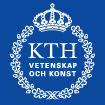links
Experimental Biomolecular physics
KTH (Royal Institute of Technology)
Applied Physics, KTH
AlbaNova University Center
Karolinska Institute
Hokkaido University
Olympus company
|
Project Description
The investigations to be performed within the project will largely
be based on Fluorescence Correlation Spectroscopy (FCS) and
related techniques. FCS is a technique based on the analysis of
intensity fluctuations of fluorescent molecules excited by a
focused laser beam. The technique offers information about
molecular dynamic processes at the single molecular level, that
takes place in the nanosecond time range and longer and manifests
itself as a change in fluorescence intensity. This project
implements a broad combined expertise in experimental and
theoretical physics, fluorescence spectroscopy, cellular and
molecular biology, biochemistry and molecular medicine. The
objective is to explore and develop FCS and related techniques for
studies of molecular dynamics at immune cell surfaces. A particular
focus will be studies of natural killer (NK) lymphocytes, critical
mediators of anti-viral immunity and protectors against cancer
spread. Our studies will provide new and essential knowledge
pertinent to molecular dynamics in NK cells and other immune cells,
at a level of resolution that is currently unexplored. However, the
experience gained from these investigations will also be used to
advance the use of FCS and variants thereof for studies of
molecular interactions in cell membranes in general.
The specific aims of this project are:
-
To explore and further develop FCS and related techniques as tools
to study molecular interactions at immune cell surfaces, using
proteins with known interaction partners, such as tetraspanins and
protein linked to glycosylphosphatidylinositol (GPI) as model
systems.
-
To quantitatively determine the absolute numbers and relative
mobilities of MHC class I, Ly49 and KIR molecules present in NK
cell membranes and to investigate how these parameters change when
NK cells undergo immune synapse formation with other cells.
If successful, this project will significantly develop the art and
procedures involved in the FCS-based characterization of cell
surface molecules, of benefit for molecular dynamic and interaction
studies at cell surfaces in general. In addition, it will provide
novel and critical information pertinent to molecular dynamics of
NK cells receptors that has proven difficult to extract by other
experimental means.
|
